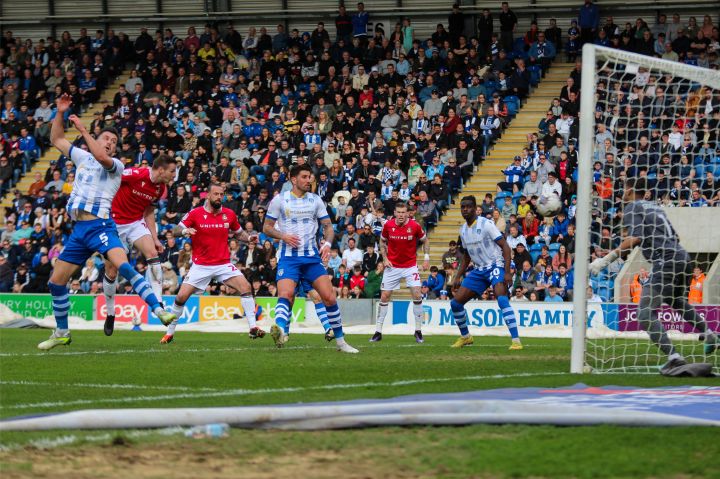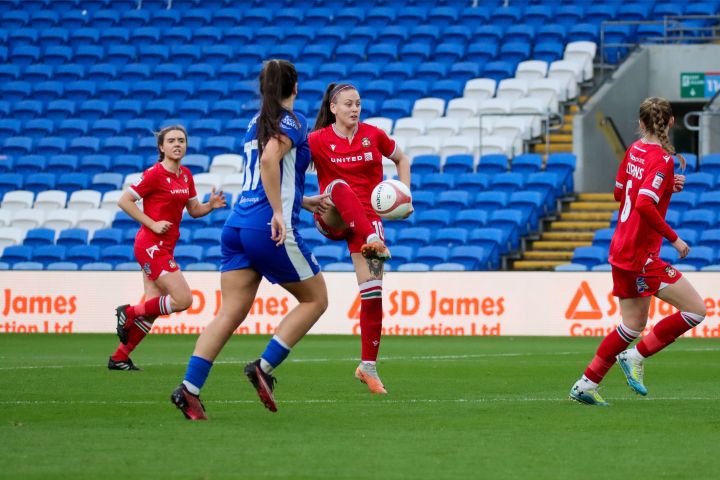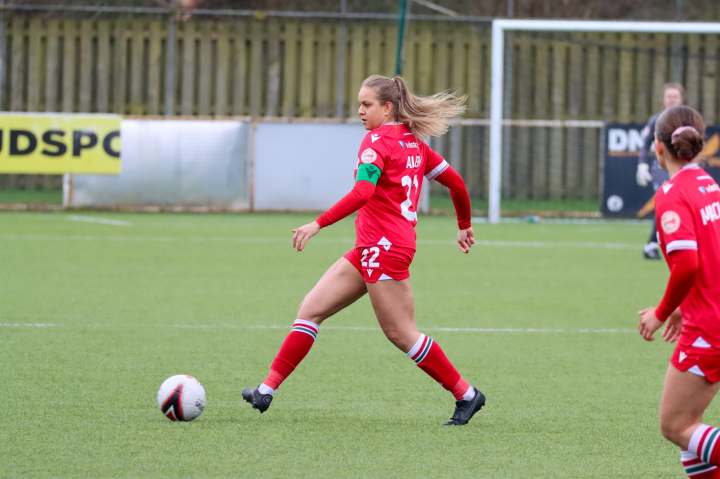Losing Shaun Pearson, Mark Carrington, Jay Harris and Paul Rutherford meant four of the eight players with the most appearances in the National League for Wrexham left the club in the space of three days. In a series of articles, let’s take a look back at the final campaigns of these old warhorses.
For months it looked like the nightmare 2020-21 season would be particularly bad for Mark Carrington. A pre-season injury lingered, and weeks passed with him forced to watch from the Mold Road Stand, slowly losing the hearing in one ear as Shaun Pearson barked at the team.
No player can afford to write off a season; a player in his 30s will have real concerns about how they’ll be able to bounce back from a long lay-off. For Carrington, who has proven particularly resilient when it comes to injuries, it must have been a profoundly troubling time.

He returned to the team for the FA Trophy match with Leamington, a game Dean Keates used to give pitch time to fringe players and those returning form injury. Far from being tentative, Carrington pulled on the captain’s armband and picked up where he left off, the model of technique and reliability. Like he always has.
As defensive injuries racked up, Carrington found himself being deployed as an emergency centre back. Ironically, this would be the catalyst for the revival of our season.
Carrington was actually part of the injury crisis, having missed the three games after that FA Trophy match. When he made his first league appearance of the season, we were going nowhere, trapped in a cycle of signs of promise followed by regression. We’d won three games in a row, culminating in that superb 4-0 win over Sutton, which lifted us to 6th, then dropped five spots in a run of 1 win in 8. We travelled to Kings Lynn with Rob Lainton, Shaun Pearson and Theo Vassell injured and Max Cleworth on the verge of leaving on loan, while Tyler French had yet to arrive.

Carrington lined up in the back three alongside Fiacre Kelleher and James Horsfield. It was a role he had fulfilled before, but was the least likely of his many positions. He’d been more of an emergency stand-in in that role rather than a viable option, and had occasionally been exposed, most recently last season at Solihull by a canny display from Danny Wright, who used his physicality and burst of pace to cause problems as he sought to isolate his one-time team mate. Not that Carrington was ever a disaster at centre back – his intelligence, professionalism and technique ensured he was never in danger of being totally overwhelmed. However, putting him at the heart of our defence was asking him to stretch those admirable qualities to the limit. For the record, he’d started just 5 games at centre back before this season.
We won comfortably at Kings Lynn, Carrington offering the usual reliable performance as we earned a first away clean sheet in two and a half months. We’d embarked on a run of 1 defeat in 14 which would establish us in the play-off pack.

Carrington was consistent throughout, his only lapses coming in the 3-0 defeats against Aldershot and Stockport when the whole side under-performed. Even then, there were no glaring lapses: just a moderate performance rather than an impressive one.
Carrington had established himself as a viable central defender, admirable quick to anticipate danger and stand shoulder-to-shoulder with the Shaun Pearson when we had to dig in. When we came across Wright again, as Torquay visited the Racecourse, there was no sign that the striker had detected a weakness in Carrington he could exploit.
All in all, Carrington started 16 games in that spell, during which we conceded just 14 goals, despite those two aberrant matches.

Carrington has come a long way during his time at Wrexham, despite his grasp on a regular first team place becoming increasingly tenuous. He was never given a prolonged opportunity to settle in the central midfield role he specialised in before coming to North Wales, starting our as a stand-in right back and winning the player of the season trophy in that position in his first season.
Perhaps his reputation for versatility is more of a talent for adaptability. It wasn’t so much that he was born to slot into different positions; more that he is a fast learner. One of his first appearances at left back was at Altrincham under Kevin Wilkin. He earned rave reviews, and his ability to fulfil his duties on the wrong side of the pitch was impressive, but to me he wasn’t quite himself. He made one major error which fortunately was unpunished, and sometimes looked uncharacteristically awkward as he adapted to his mirror-image role.

I didn’t notice these problems for long. Almost instantaneously he’d progressed from stand-in left back to a comfortable back-up. His standards on the left were as high as they were on the right, and a succession of managers were happy not to bother with signing a back-up to James Jennings because they knew Carrington would do the job better than anyone they’d tempt to the club in that capacity.
This season he’s done it again, progressing from an emergency centre back to a mainstay of a strong back three. How ironic that, in a season where he’s played just over a third of our games, he’s made a massive contribution to our promotion push, after seasons of quiet excellence in sides which struggled to mount a successful campaign.



